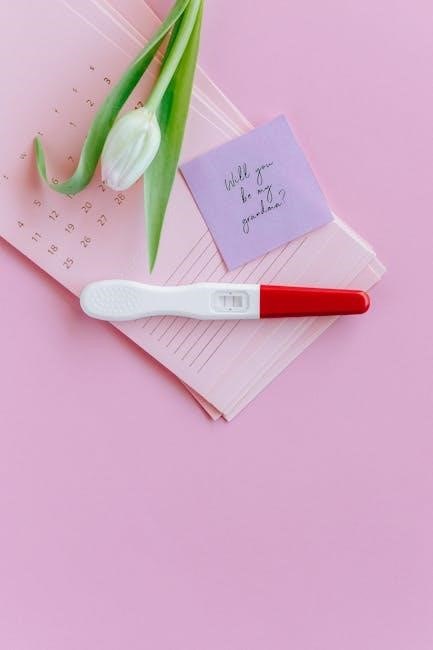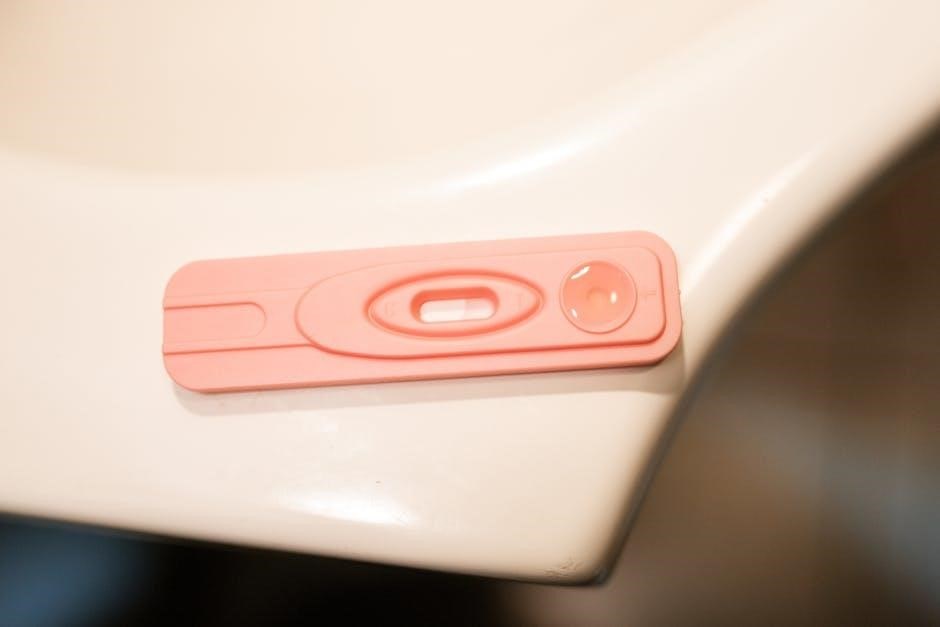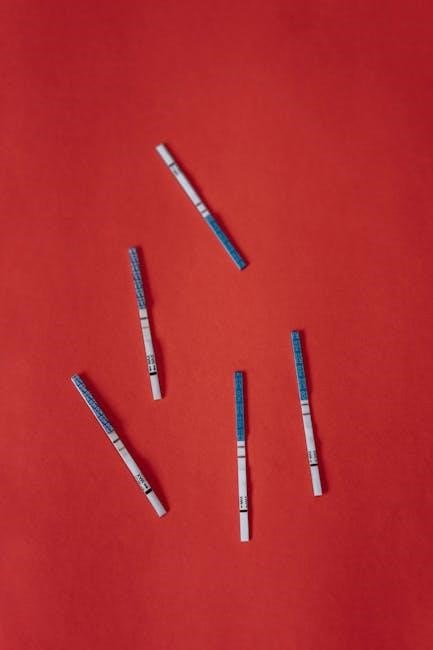The HTH 6-Way Test Kit is a comprehensive solution for monitoring pool water quality. It tests six essential parameters, including chlorine, bromine, pH, alkalinity, hardness, and CYA levels, ensuring accurate and reliable results. Designed for both novice and experienced pool owners, this kit simplifies water testing, helping maintain a safe and clear swimming environment. Its ease of use and precision make it an indispensable tool for optimal pool care.

Overview of the HTH 6-Way Test Kit
The HTH 6-Way Test Kit is a user-friendly, all-in-one solution for pool owners to monitor water quality. It tests six critical parameters: total chlorine, bromine, pH, total alkalinity, total hardness, and cyanuric acid (CYA). This comprehensive kit ensures accurate results, helping maintain a safe and enjoyable swimming environment. With its innovative test strips and reagents, the kit simplifies the testing process, providing clear and reliable data. Designed for both indoor and outdoor pools, it is an essential tool for anyone seeking to optimize pool water balance and prevent potential issues. Its ease of use and versatility make it a top choice for pool maintenance.
Importance of Regular Pool Water Testing
Importance of Regular Pool Water Testing
Regular pool water testing is crucial for maintaining a safe, clean, and enjoyable swimming environment. It ensures the water is properly balanced, preventing issues like algae growth, eye irritation, and equipment damage. Consistent testing helps monitor sanitizer levels, pH, and other key parameters, safeguarding swimmer health and extending the lifespan of pool equipment. Neglecting regular testing can lead to imbalanced water chemistry, creating an environment for harmful bacteria and contaminants to thrive. By using the HTH 6-Way Test Kit, pool owners can easily maintain optimal water quality, ensuring a pristine and safe pool experience throughout the season. Regular testing is essential for protecting both the pool and its users.
Benefits of Using the HTH 6-Way Test Kit
The HTH 6-Way Test Kit offers numerous benefits, making it a top choice for pool owners. It provides quick and accurate results for six key parameters, ensuring comprehensive water analysis. The kit is user-friendly, with clear instructions and color-coded charts for easy interpretation. Regular use helps maintain optimal water balance, preventing issues like algae growth and equipment damage. It also ensures swimmer safety by monitoring sanitizer levels and pH. The kit is cost-effective and time-saving, eliminating the need for frequent lab tests. By providing precise and reliable data, the HTH 6-Way Test Kit empowers pool owners to make informed decisions, keeping their pool clean, safe, and enjoyable year-round.

Understanding the Components of the HTH 6-Way Test Kit
The HTH 6-Way Test Kit includes test strips, reagents, and a color chart. It tests for chlorine, bromine, pH, alkalinity, hardness, and cyanuric acid levels, ensuring comprehensive pool water analysis.
What is Included in the Kit
The HTH 6-Way Test Kit includes test strips, reagents, a color comparison chart, and a test vial. The test strips are designed for quick, dip-and-read results, while the reagents provide precise chemical measurements. The color chart helps users accurately interpret test strip results. Additionally, the kit contains a sample collection vial for gathering pool water samples. Instructions for use are also provided, ensuring users can perform tests correctly. This comprehensive set of tools allows for thorough monitoring of pool water quality, covering essential parameters like chlorine, bromine, pH, alkalinity, hardness, and cyanuric acid levels. Everything needed for accurate and reliable testing is included in the kit.
Description of Test Strips and Reagents
The HTH 6-Way Test Kit includes high-quality test strips designed for quick and accurate results. These strips are coated with reactive pads that change color based on the concentration of specific chemicals in the pool water. The reagents provided in the kit are precise chemical solutions used to measure parameters that require titration, such as total hardness or cyanuric acid. The test strips are easy to use—simply dip them in the water and compare the color changes to the provided chart. The reagents come with droppers for precise measurement, ensuring accurate test results. Together, the strips and reagents offer a reliable way to monitor and adjust pool water chemistry.
Purpose of Each Testing Component
Each component in the HTH 6-Way Test Kit serves a specific role in ensuring balanced pool water chemistry. The test strips quickly assess multiple parameters simultaneously, providing immediate visual results. Reagents are used to measure specific chemical levels accurately, such as total hardness and cyanuric acid, which are crucial for stabilizing chlorine and preventing damage to pool equipment. The color chart included in the kit helps users interpret test strip results, guiding adjustments to maintain ideal water conditions. By combining these elements, the kit offers a complete solution for monitoring and maintaining optimal pool water quality, ensuring a safe and enjoyable swimming environment for everyone.

Parameters Tested by the HTH 6-Way Test Kit
The kit tests six key parameters: total chlorine, bromine, pH, total alkalinity, total hardness, and cyanuric acid levels, ensuring comprehensive pool water analysis and balance.

Total Chlorine and Bromine Levels
Testing for total chlorine and bromine levels is crucial for ensuring pool water safety and clarity. Chlorine is a primary sanitizer that kills bacteria and oxidizes contaminants, while bromine is an alternative sanitizer for some pools. The HTH 6-Way Test Kit measures these levels to ensure they fall within the ideal range of 1-3 parts per million (ppm). If levels are too low, harmful bacteria and algae can grow. If too high, swimmers may experience eye irritation or skin discomfort. The kit provides test strips or reagents to accurately determine these levels, helping pool owners maintain a balanced and safe swimming environment. Regular testing is essential for optimal pool maintenance.
pH Levels in Pool Water
Measuring pH levels in pool water is vital for maintaining a safe and comfortable swimming environment. The pH scale ranges from 0 to 14, with the ideal range for pool water being 7.2 to 7.8. A pH level below 7.2 can cause eye irritation and etching of surfaces, while levels above 7.8 reduce the effectiveness of sanitizers like chlorine. The HTH 6-Way Test Kit includes test strips or reagents to accurately measure pH levels. Regular testing ensures balanced water chemistry, preventing discomfort for swimmers and protecting pool equipment. Adjustments can be made using pH increasers or decreasers to maintain optimal levels, ensuring clear and sanitized water.
Total Alkalinity (TA) Measurement
Total alkalinity (TA) measures the water’s ability to resist pH changes, acting as a buffer against fluctuations. The HTH 6-Way Test Kit includes a reagent to accurately determine TA levels. For pool water, the ideal TA range is 60–120 ppm. Low TA can cause unstable pH levels, while high TA may lead to cloudy water or scaling. Regular testing with the kit ensures balanced water chemistry. To measure TA, add the provided reagent to a water sample until the color changes, indicating the TA level. Adjustments can be made using alkalinity increasers or decreasers if necessary. Proper TA levels are essential for maintaining clear, stable, and comfortable pool water.
Total Hardness (TH) Testing
Total hardness (TH) measures the concentration of calcium and magnesium in pool water. These minerals affect water clarity and equipment longevity. The HTH 6-Way Test Kit includes a reagent to test TH levels, with ideal ranges typically between 175–400 ppm. Low TH can cause corrosion of metal components, while high TH may lead to scaling or cloudy water. Testing involves adding a reagent to a water sample until a color change indicates the hardness level. Maintaining proper TH prevents damage to pool equipment and ensures a stable swimming environment. Regular testing with the kit helps balance these essential minerals for optimal water quality and longevity of pool systems.
Cyanuric Acid (CYA) Levels
Cyanuric acid (CYA) stabilizes chlorine in pool water, preventing UV degradation. The HTH 6-Way Test Kit measures CYA levels, ensuring they fall within the recommended 30–100 ppm range. Low CYA reduces chlorine’s effectiveness, while high levels can decrease chlorine’s efficiency. Testing CYA involves adding a reagent to a water sample until a color change indicates the concentration. Proper CYA levels help maintain consistent sanitizer performance, reducing the need for frequent chlorine adjustments and protecting the pool from harmful UV rays. Regular testing ensures optimal CYA balance, contributing to a safe and efficient swimming environment. The kit’s accurate measurements simplify maintaining ideal CYA levels for peak pool performance.

Preparing for Testing
Before testing, gather the HTH 6-Way Test Kit, a clean container, and pool water sample. Ensure the pool water is calm and free from debris for accurate results. Always follow the kit’s instructions for proper preparation to achieve reliable readings and maintain optimal pool water quality. This step ensures precise measurements of key parameters like chlorine, pH, and alkalinity, helping you make informed adjustments for a safe and clean swimming environment.
Gathering Samples
Gathering Samples
To ensure accurate test results, collect a pool water sample correctly. Fill a clean container with water from elbow depth, avoiding surface debris or contamination. For best accuracy, take the sample at least 12 inches below the surface, away from skimmers and return jets. Rinse the test vial thoroughly before filling it to the recommended 10ml mark. Avoid touching the strip pads with your fingers to prevent contamination. Use the sample immediately after collection to maintain water chemistry stability. Proper sampling ensures reliable readings for parameters like chlorine, pH, and alkalinity, helping you make informed adjustments for optimal pool water quality and safety.
Proper Sample Collection Techniques
Proper Sample Collection Techniques
Proper sample collection is crucial for accurate test results. Collect water from 12 inches below the surface at elbow depth, avoiding debris and contaminants. Rinse the test vial thoroughly before filling it to the 10ml mark. Avoid touching the test strip pads with your fingers to prevent contamination. Collect the sample away from skimmers, jets, and pool edges to ensure representative water chemistry. Store the sample in a clean, dry container and test immediately to avoid chemical changes. Proper techniques ensure reliable data for parameters like chlorine, pH, and alkalinity, helping you maintain optimal pool water quality and safety. Follow these steps to achieve precise and consistent results.
Pre-Testing Checklist
Pre-Testing Checklist
Before testing, ensure all components of the HTH 6-Way Test Kit are within their expiration dates and undamaged. Gather a clean, dry container for water sampling and rinse the test vial thoroughly. Avoid touching test strip pads to prevent contamination. Ensure the pool water is well-circulated and free from debris. Test the water at least 12 hours after chemical application or heavy pool use. Review the instruction manual to familiarize yourself with the process. Keep all materials within reach to streamline the testing process. Proper preparation ensures accurate and reliable results, helping you maintain a safe and healthy swimming environment.

Step-by-Step Instructions for Using the HTH 6-Way Test Kit
Dip the test strip into the pool water, then wait 2 seconds. Compare the strip colors to the chart. Use reagents for precise chemical level measurements. Record results accurately for adjustments.

Activating the Test Strips
Activating the Test Strips
To activate the test strips, dip the strip into the pool water at elbow level, ensuring the pads are fully submerged. Hold for 2 seconds, then remove and shake gently to eliminate excess water. Compare the color changes on the strip to the provided chart for each parameter. For some tests, add a reagent to the test pad and wait 10-15 seconds for the color to develop fully. Avoid touching the test pads with your fingers, as oils from skin can interfere with results. Always handle strips carefully to ensure accurate readings and reliable test outcomes for maintaining optimal pool water quality.
Comparing Strip Colors to the Chart
Comparing Strip Colors to the Chart
After activating the test strips, carefully compare the color of each pad to the corresponding chart provided in the HTH 6-Way Test Kit. Hold the strip alongside the chart under good lighting for an accurate match. Each parameter (e.g., chlorine, pH, or alkalinity) has its own color scale, so ensure you align the correct pad with its respective guide. Avoid guessing; instead, look for the closest color match to determine the exact level. If the color falls between two markings, estimate the midpoint for a more precise reading. This step is crucial for interpreting results accurately and making necessary adjustments to maintain balanced pool water chemistry.
Measuring Chemical Levels with Reagents
Measuring Chemical Levels with Reagents
After collecting your pool water sample, use the reagents provided in the HTH 6-Way Test Kit to measure specific chemical levels. For each test, add the recommended number of reagent drops to the sample vial. Gently shake the vial to mix thoroughly. Allow the solution to react for the specified time, usually 10-30 seconds, before observing color changes or turbidity. Use the color chart or measurement scale to determine the exact level of each parameter. Always follow the instructions precisely to ensure accurate results. Proper use of reagents is crucial for maintaining balanced pool water chemistry and preventing issues like cloudy water or equipment damage. Regular testing helps maintain a safe and enjoyable swimming environment.
Recording Test Results
Recording Test Results
Accurately recording test results is crucial for maintaining optimal pool water quality. After testing, note down the measured levels of each parameter using the provided chart or digital tools. Use a dedicated pool maintenance log or the HTH app to track changes over time. This helps identify trends and ensures adjustments are made promptly. Regular documentation allows for quick reference and informed decision-making. By keeping detailed records, you can maintain balanced water chemistry, prevent issues, and extend the lifespan of your pool equipment. Consistent recording also aids in troubleshooting and ensures a safe, enjoyable swimming environment year-round.

Interpreting Test Results
Interpreting test results involves comparing strip colors to the provided chart and identifying ideal parameter ranges. Accurate interpretation ensures balanced water chemistry and optimal pool maintenance. Adjust levels accordingly.
Understanding the Color Chart
Understanding the color chart is crucial for accurate test results. The chart provides a visual guide, matching test strip colors to specific parameter levels. Each color corresponds to a numerical value, allowing users to determine if levels are within the recommended range. For example, a yellow strip may indicate low pH, while a dark blue signifies high alkalinity. By comparing the strip colors to the chart, pool owners can quickly identify imbalances and take corrective action. Regular use ensures consistent water quality and extends equipment lifespan. Always refer to the chart included in the HTH 6-Way Test Kit for precise interpretations.
Identifying Ideal Ranges for Each Parameter
Identifying ideal ranges for each parameter ensures optimal pool water quality. The HTH 6-Way Test Kit measures six key elements, each with specific target levels. For instance, total chlorine should be between 1-3 ppm, while pH levels should range from 7.2-7.8; Total alkalinity is recommended to be 80-120 ppm, and total hardness should be 200-400 ppm. Cyanuric acid levels should be maintained between 30-100 ppm. By adhering to these ranges, pool owners can prevent issues like eye irritation, corrosion, or sanitizer inefficiency. Consistently monitoring and adjusting these levels ensures a safe and enjoyable swimming environment, extending the lifespan of pool equipment and maintaining clear, clean water.
Common Issues Revealed by Test Results
Test results from the HTH 6-Way Test Kit can uncover common pool water issues. Low chlorine or bromine levels may indicate inadequate sanitization, leading to bacterial growth. High pH levels can cause cloudy water or eye irritation, while low pH may corrode equipment. Imbalanced total alkalinity can make pH levels unstable, and high total hardness might cause scaling. Low cyanuric acid levels can reduce chlorine’s effectiveness, while high levels may lead to stabilizer overloading. These issues, if left unaddressed, can compromise water clarity, sanitizer efficiency, and swimmer comfort. Regular testing helps identify these problems early, allowing for timely adjustments to maintain a safe and enjoyable swimming environment.

Maintaining and Troubleshooting the HTH 6-Way Test Kit
Regular maintenance ensures accuracy. Store the HTH 6-Way Test Kit in a cool, dry place, away from direct sunlight. Avoid contamination by keeping test strips and reagents tightly sealed. Clean the kit after each use and replace expired components. Proper handling prevents errors and extends the kit’s lifespan.
Storage and Maintenance Tips
Storage and Maintenance Tips
Proper storage and maintenance are crucial for the longevity and accuracy of the HTH 6-Way Test Kit. Store the kit in a cool, dry place, away from direct sunlight and chemicals. Keep test strips and reagents in their original, sealed containers to prevent contamination and moisture exposure. After each use, clean the kit thoroughly and ensure all components are dry before storage. Regularly check expiration dates of reagents and test strips and replace them as needed. Avoid touching the test strips or reagents with bare hands to maintain accuracy. For optimal performance, ensure the kit is not exposed to extreme temperatures or humidity. Proper care ensures reliable results and extends the kit’s lifespan.
Troubleshooting Common Testing Errors
Troubleshooting Common Testing Errors
Common testing errors with the HTH 6-Way Test Kit often stem from improper sample collection or mishandling of components. Contaminated test strips or reagents can lead to inaccurate results, so ensure they are stored properly and not touched with bare hands. Expired reagents or strips may also cause issues, so always check their validity before use. If test results are inconsistent, verify that samples are taken at the correct depth and location, avoiding areas with heavy chemical residue. Additionally, ensure strips are dipped correctly and compared to the color chart within the recommended time frame. Addressing these common pitfalls will help achieve reliable and precise test outcomes.
When to Replace Test Strips or Reagents
When to Replace Test Strips or Reagents
Replace test strips or reagents in the HTH 6-Way Test Kit when they expire, show signs of degradation, or yield inconsistent results. Check expiration dates on packaging and discard expired items; If strips fade or reagents change color, they may be compromised. Improper storage, such as exposure to heat or moisture, can also reduce their effectiveness. Replace reagents when levels are low or if contaminated. If test results seem off or inconsistent with previous findings, it may indicate the need for replacement. Always follow manufacturer guidelines for storage and replacement to ensure accurate testing and maintain pool water quality effectively.
The HTH 6-Way Test Kit is a valuable tool for ensuring accurate and reliable pool water testing. Its ease of use and comprehensive parameters make it essential for maintaining optimal pool conditions, ensuring a safe and enjoyable swimming environment.
The HTH 6-Way Test Kit is an essential tool for maintaining optimal pool water quality. It tests six critical parameters: total chlorine, bromine, pH, total alkalinity, total hardness, and cyanuric acid. Regular testing ensures a safe and enjoyable swimming environment by identifying imbalances early. The kit’s user-friendly design, including test strips and reagents, simplifies the process. Always follow the instructions for accurate results, and adjust chemical levels as needed; Proper storage and maintenance of the kit are crucial for its longevity. By using the HTH 6-Way Test Kit consistently, pool owners can achieve and maintain optimal water quality effortlessly.
Final Tips for Optimal Pool Water Quality
Regularly test your pool water using the HTH 6-Way Test Kit to ensure balanced levels of chlorine, bromine, pH, alkalinity, hardness, and cyanuric acid. Adjust chemicals promptly based on test results to maintain a safe and clear swimming environment. Consistency is key—test at least once a week, or more during heavy use. Store test strips and reagents properly to maintain their accuracy. Avoid waiting for visible issues like cloudiness or algae growth before testing. By following these guidelines and the kit’s instructions, you can enjoy a well-maintained pool year-round. Always refer to the HTH Pool Care Guide for additional tips and troubleshooting advice.
